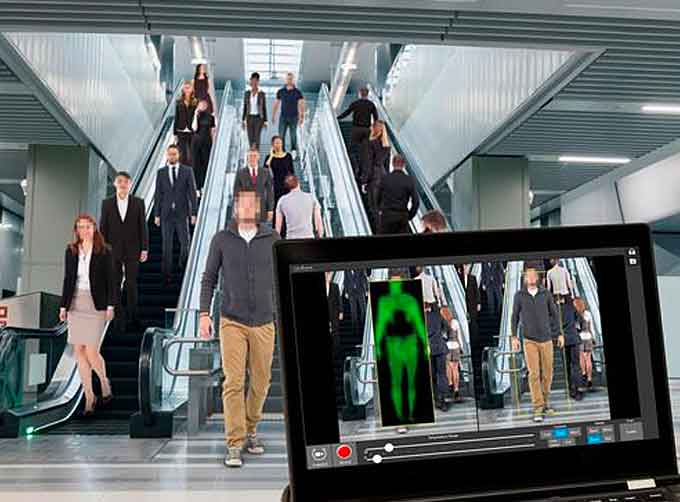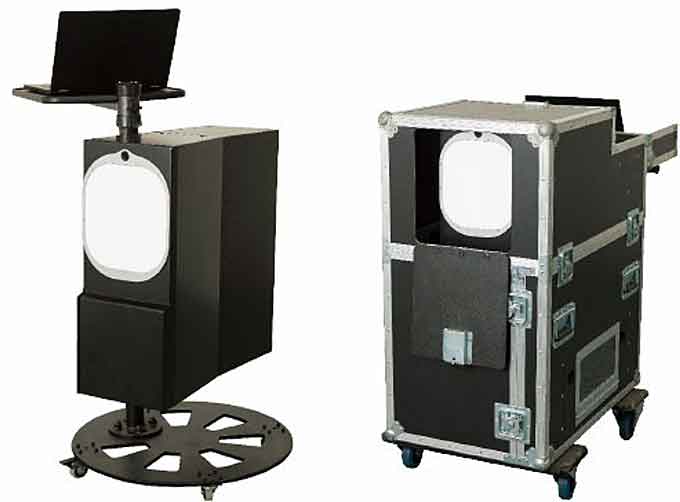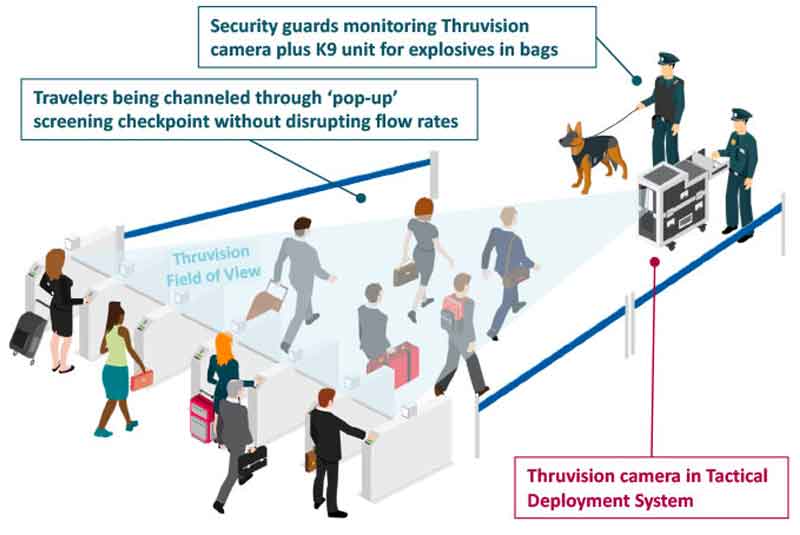
The Transportation Security Administration (TSA) and the Port Authority of New York and New Jersey (PANYNJ) are partnering to test new security technology that can help officials detect whether an individual is concealing an improvised explosive device such as a suicide vest.
The equipment testing, made by UK-based Thruvision Group, is taking place inside the Port Authority Bus Terminal at select times and locations this week.
(See the technology. Courtesy of Thruvision and Vimeo. Posted in July 2018.)
The passive system, known as a stand-off explosive detection unit, triggers an alarm if an individual carrying/wearing a person-borne improvised explosive device (PBIED) passes by the mechanism.
It is a type of screening technology that can be used by the Port Authority Police to detect potential threats—metallic or non-metallic—by identifying objects that block the naturally occurring emissions emitted by a person’s body.

No radiation of any kind is emitted by the unit, and no anatomical details of a person are displayed.
Two different devices are being tested.

The operator of the equipment sees either a green image of a person, known as a “green ghost,” alongside of the actual image of the individual or a color-indicator bar overlay, depending on which model of the technology is being used.
The use of such a device enables the Port Authority Police to help safeguard against terrorist threats in the mass transit environment.
It is operated by employees of the agency, not by TSA.
TSA is, however, supplying two models of the equipment for the purposes of the demonstration.
One model is mounted on a tripod and another is contained in a trunk.


















